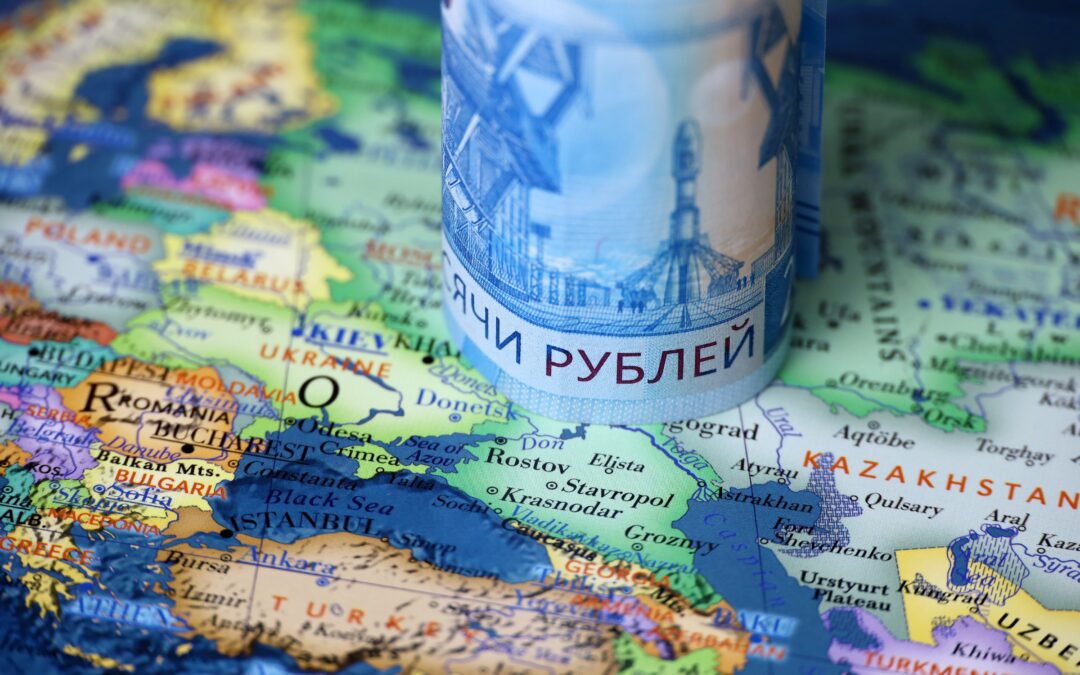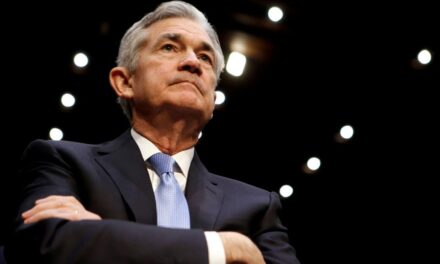Russia invading Ukraine has been the biggest thing in the news for weeks now.
That’s had an outsized impact on the market since before it started. The prospect of war in Ukraine was enough to add volatility back in February.
And it still keeps roiling the market.
It’s funny … 2021 was a great year. Calm, not a lot of volatility.
And 2022, pretty well from the beginning, has been a volatile mess. A lot of that has been due to the Fed pulling back its $120 billion in monthly liquidity.
Let’s try to make sense of it all by breaking it down into two parts.
First, I want to show you how Russia is fueling a supply chain boom.
The Chance of Another Cold War
Now, at the top of the list, whenever you see Russia at war, whenever we see the West and Russia butting heads, the first thought that goes in your head is: Oh boy, World War III, nuclear war. It’s going to be Cold War literature come to life.
I don’t think that’s the risk we need to look out for. We can’t completely dismiss it. Is it possible that the U.S. and/or Europe get into a hot war with Russia? Yes. That is possible.
Is it possible that if such were to happen, it would go nuclear? That is also possible, though, if that happened, we would have far bigger problems than our stock portfolio at that point.
I hope you have canned goods and shotgun shells and radiation suits because that’s the world we’d be living in at that point.
Why the Ukraine Situation Matters
Beyond that, why does this matter? Of course we feel horrible for the Ukrainian people. We wish them the best. We hope that they’re successful in repelling the invasion.
But what does this really have to do with us, with our portfolios? How does it affect our bottom line?
It does in a couple of different ways.
No. 1: It accelerates one major trends that was already in place before any of this happened, and that is, for lack of better words, the undoing of globalization.
One of the best tailwinds in the global economy over the past 30 years has been globalization.
It’s massively lowered costs, it’s kept inflation in check and it’s bettered our standard of living as a whole.
Obviously, you can find exceptions. There’s always the unemployed factory worker or the person whose business was disrupted because of globalization who faced financial distress.
But for the most part, all of us live a better, in economic terms, more prosperous life because of globalization. It’s massively reduced the cost of stuff.
And this was a multi-step process. It didn’t happen overnight. It started after World War II, when the victors started to consolidate and started to lower trade barriers.
Globalization Across the World
China
Globalization massively accelerated following China’s change of direction in 1978, when China decided that communism wasn’t such a good idea — after all, capitalism isn’t such a bad thing. And it started making its market reforms.
You had the world’s largest country by population suddenly integrated into the global economy, whereas it was not before.
Communist economies are closed. They are not really part of the system. So that started small, of course. But then it accelerated and by the late ’90s, China was a member of the World Trade Organization and it was fully integrated into the world economy. It’s only gotten bigger since then.
The Soviet Union
Now, not too long before that, 1991, the Berlin Wall fell, and the Soviet Union, which was, of course, our greatest nemesis during the Cold War, fell.
As a result, a lot of its satellite empire of Eastern Europe — Romania, Poland, Hungary, Czech Republic — all those countries that were formerly part of the Soviet Bloc drifted over to the West.
And suddenly, you had this large, educated workforce in Eastern Europe that was just virgin territory. These were new workers to add to the system and integrate into the global economy.
That was another globalized factor that helped to push down labor costs.
India
Then not too much later — most people don’t realize this because they think India’s a democratic country (and it has been since independence.) But India was closely allied with the Soviet Union post-independence. It had a close-to-communistic economic model for most of the early decades of its existence as an independent country.
The fall of the Soviet Union was India’s wake-up call to start modernizing its economy and start integrating more into the global economy.
Now you have Indian technology. And back-office outsourcing is a massive business, which, again, massively pushed down global wages.
It raised wages in India but kept a lid on wages in the West, which, of course, allowed the cost of goods and services to fall, which bettered our standard of living.
I know I’m giving an economics lecture here, but all this happened:
- China joined the world economy.
- The fall of the Soviet Union and the ex-Soviet empire got integrated into the world economy.
- India started getting integrated into the world economy.
Suddenly we have this exciting, globalized world. Well, we benefited from that. It kept inflation in check and helped productivity.
It was this massive tailwind. And that is likely going into reverse.
The New Supply Chain Without Russia
You could argue it’s been starting for a while, but COVID-19 was really the first shot across the bow.
When, all of a sudden, the world can be shut down, when borders can be closed, when ships can be kept out of port … when everything got disrupted, suddenly the risk of globalization became obvious.
When you have an overly complex supply chain where you may get parts from China, from South Korea, from Taiwan, then go back to China for the actual manufacturing process, and then send it wherever, to Japan for someone to add a component there… By the time it gets to U.S. shores, you may have pieces from a dozen countries or more and different stages of manufacturing along the way.
So that created risks that were not really appreciated, and the pandemic made a lot of companies realize, “Yeah, this is a risk. We need to keep our production closer to home. We need to shorten that supply chain and we need to de-globalize to some extent.”
So that’s already happening, and part of the big supply chain mess that we’ve written about in Green Zone Fortunes.
It’s part of the reason we recommended a massive shipping stock to Green Zone Fortunes readers recently. Click here to learn how to gain access to Adam’s pick and more.
You had this reorganization of global trade that’s part of this shortening of the supply chain, part of just fixing this problem … not just for today, but fixing it for the future as well.
All that was already happening, and then you have the Russian tanks roll in, and now, all of a sudden, Russia is done. Russia is effectively outside of the world order now. It’s not part of anyone’s supply chain.
Everyone who was previously doing business with Russia is now doing everything they can to divert away from Russia, to cut Russia out.
So if supply chains were already going through a transformation, that’s just been accelerated.
This is just one way the situation in Ukraine is changing the world we invest in. I’ll have another for you later this week.
To safe profits,
Charles Sizemore, Co-Editor, Green Zone Fortunes
Charles Sizemore is the co-editor of Green Zone Fortunes and specializes in income and retirement topics. He is also a frequent guest on CNBC, Bloomberg and Fox Business.






